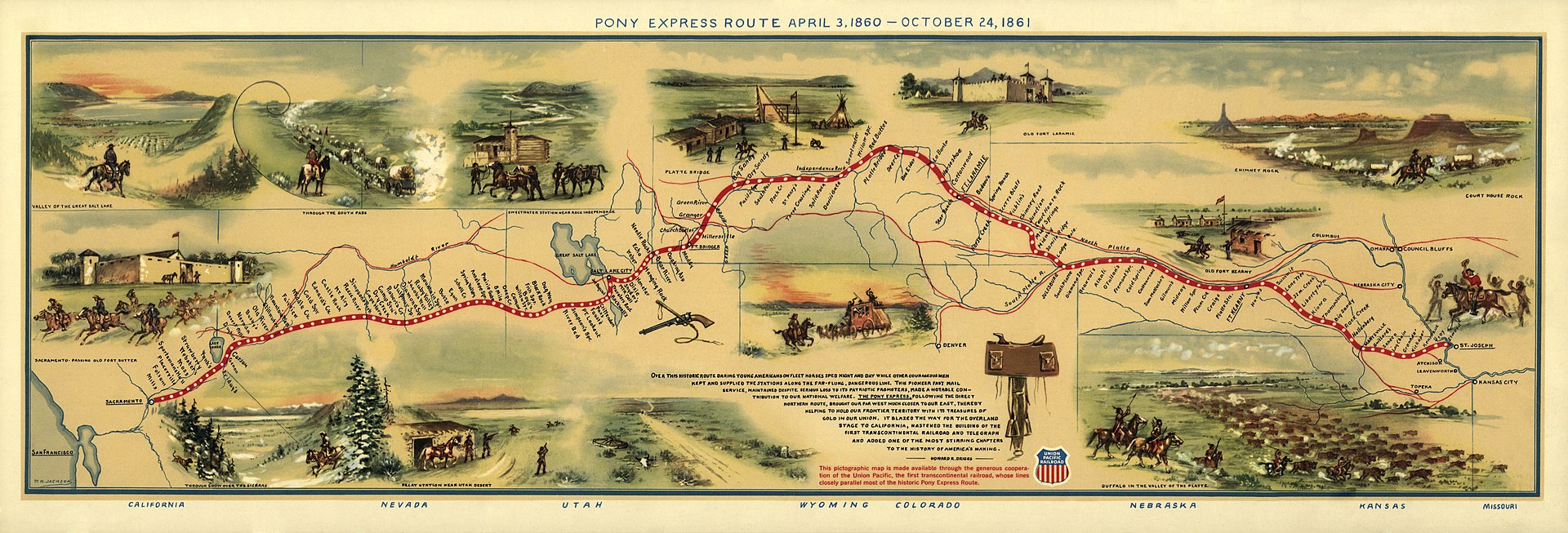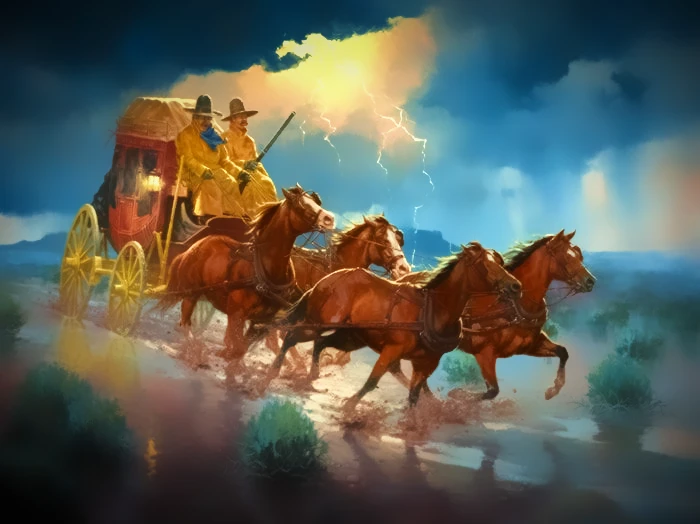Mother Lode Overland Stage Heads to Town on High Noon, Sunday, October 23rd
Richard Downey, Mother Lode Overland Stage
(PLACERVILLE, CALIFORNIA) Oct 21, 2022 — Stagecoach Friends & Wranglers:
The Mother Lode Overland Stage is on the final stretches of its long overland journey from St. Louis, Missouri, to Hangtown, California via Freemont Springs, Scotts Bluff, Fort Laramie, Jim Bridger Turnoff, Carson House, Hell’s Canyon Ridge Run, Devil’s Gate, Alkali Flats, Tahoe Lookout, Strawberry, Sportsman Hall, and finally Hangtown Bell Tower at High Noon, Sunday, October 23rd.
The stage will rest up horses and all passengers are welcome to board and ride around town before departing at three PM for Sacramento.
Please feel free to contact us anytime as Pony Express Riders are standing by with their mochilas to hand Dan, pictured below, any express mail.
Thank You,
Mother Lode Overland Stage

—
The Overland Trail (also known as the Overland Stage Line) was a stagecoach and wagon trail in the American West during the 19th century. While portions of the route had been used by explorers and trappers since the 1820s, the Overland Trail was most heavily used in the 1860s as a route alternative to the Oregon, California, and Mormon trails through central Wyoming. The Overland Trail was famously used by the Overland Stage Company owned by Ben Holladay to run mail and passengers to Salt Lake City, Utah, via stagecoaches in the early 1860s. Starting from Atchison, Kansas, the trail descended into Colorado before looping back up to southern Wyoming and rejoining the Oregon Trail at Fort Bridger. The stage line operated until 1869 when the completion of the First Transcontinental Railroad eliminated the need for mail service via stagecoach.
According to Erb, Brown and Hughes, “Stations were located approximately every 10 to 15 miles apart and stocked with the finest horses, mules, tack and coaches. The larger places, called Home Stations, located approximately every 50 miles, where the driver’s route ended, were built to accommodate travelers with meals and overnight lodging, and had a telegraph station. The smaller, or swing stations, built on one-quarter to one-half acre plots, just provided fresh teams for the coaches.

